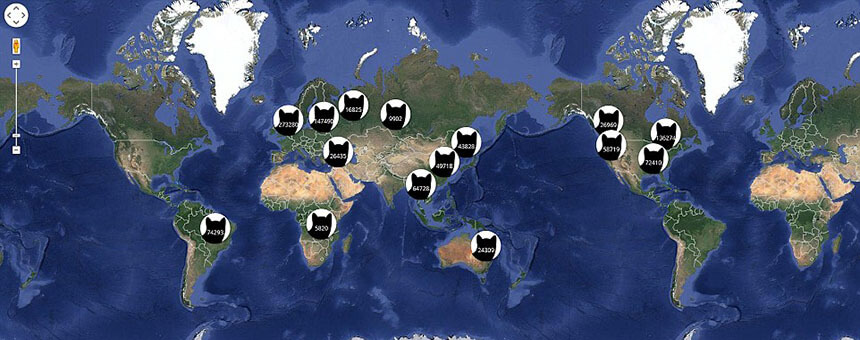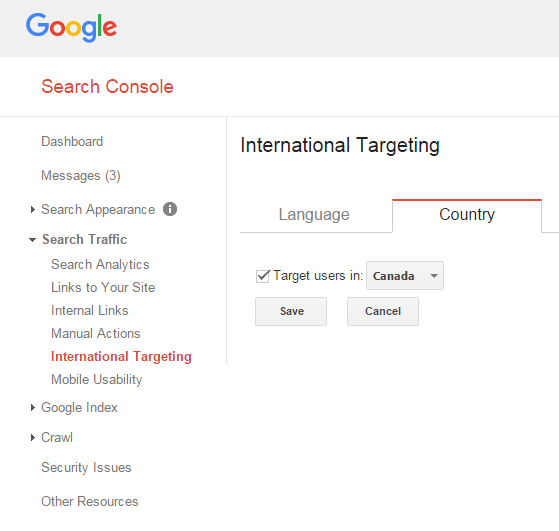
If you’re in Digital Marketing, you’re probably familiar with the term “Glocal.” It’s about thinking global but acting local. Thanks to the internet, everyone’s your neighbor (yes, even that wild-haired hoarder who lives down the hallway) and taking your brand global has never been more opportune.
But having the ambition to launch a grand, global strategy for a company is only the beginning. Executing on that concept requires an extensive amount of technical skills from all marketing departments, specifically SEO, as you attempt to target without borders. Your most important ammunition for such a campaign? That’ll be your company website, which needs to be relevant to every market in which you plan to sell…
Let me set the scene for you:
You run an e-commerce business based in the US, selling mittens for kittens, because even kittens get a little cold sometimes. You’re finding business is booming in the US and you’ve noticed a gap in the Canadian kitten-mitten market; you’re feline pretty good about it. It’s a purrfect business expansion opportunity.
URL Considerations
The current URL (mittensforkittens.com) hosts a US-based site. The products are tailored to the US market; mittens with US flag patterns, mittens with Donald Trump’s face on them, and mittens that can be super-sized. Your Canadian market has no interest in this – Canadian kittens want mittens sporting moose decals, maple syrup scented mittens, and mittens with insulation to -60 degrees. The style of writing for content will be different, and there will be French pages targeting Quebec kitten owners.
There are three options here:
- Purchase the .ca version of the domain and run a separate site for the Canadian market
Pros: This is the most desirable option, as there is clear differentiation between the countries targeted (great for SEO efforts). The domain can be hosted on a local server which further helps to strengthen the authority within the country.
Cons: You are completely starting from scratch. New content needs to be developed, the site needs time to be indexed, new backlinks need to be earned and domain authority needs to be built. This option should be chosen only if the business has enough resources to maintain two separate sites and develop unique content for each, down to the product information (duplicate content is a big SEO-no).
- Use different directories (or folders) on the existing site
Eg: mittensforkittens.com/ca
Pros: All of the existing site authority is passed onto the new section, therefore making it easier to rank organically, fast. The backlink profile is maintained. Costs associated with a new site are avoided, and only specific country-related content needs to be developed, as opposed to all supporting content too. Subdirectories work well when simply creating new language content (and not targeting a new country).
Cons: The site can’t be hosted on a different, local server. Specific to Canada, it can also get messy when looking at developing French content too; the site will need to be split across two different directories (/ca-en and /ca-fr).
- Create subdomains for locations
Eg: canada.mittensforkittens.com
Pros: The subdomain can be hosted on a different local server, and can be geo-targeted in Google Search Console (unlike a subfolder). It’s also more organized when creating content in different languages (canada.mittensforkittens.com/fr).
Cons: It is treated as a separate site by Google, therefore the concept of the backlink profile being maintained is constantly questioned in the industry. Subdomains can also be quite lengthy, which is poor for the user.
Overall…
If you’re targeting a new country and have the resources to develop and maintain a new site, get a local domain (eg: .ca, .com.au, .co.uk)
If you’re targeting a new country and DO NOT have the resources to develop and maintain a new site, use a subdomain (eg: canada.mittensforkittens.com)
If you’re not targeting a new country, just a new language, use a subdirectory (eg: mittensforkittens.ca/fr)
Geo-Targeting in Google Search Console
Within Google Search Console (previously Webmaster Tools), you are able to set the country to target for your domain (and subdomain).
The International Targeting option is under “Search Traffic,” and then you are able to select a country.
In addition to this, clicking on the “Language” tab will inform you if there are Hreflang tags present on the site.
Hreflang: More Than Just a Funny Looking Word
Hreflang tags should be used to signify to Google the following scenarios:
- The content on your site has regional variations with similar content in one language (e.g. US English vs. CA English)
For example, you’re using a subdomain (canada.mittensforkittens.com), and need to signal to Google that the subdomain is for Canada, and the main domain is intended to be shown to US searchers.
Place the following tags in the <head> section of the code:
- <link rel=”alternate” href=”http://mittensforkittens.com” hreflang=”en-us” />
- <link rel=”alternate” href=”http://canada.mittensforkittens.com” hreflang=”en-ca” />
This needs to be repeated across any pages that are the same but have slight regional differences (with the corresponding URLs).
- Your site is completely translated, displaying the same content in two languages (e.g. English and French in Canada)
Your domain, mittensforkittens.ca has a French variation at /fr. You need to indicate to Google that although the content is similar (or the same) despite language difference, both are intended to be shown in Canada, just to difference searchers.
Place the following tag in the <head> section of the code:
- <link rel=”alternate” href=”http://mittensforkittens.ca/” hreflang=”en-ca” />
- <link rel=”alternate” href=”http://mittensforkittens.ca/fr” hreflang=”fr-ca” />
This needs to be translated across all pages.
Quebec: French Language Laws and Your Website
A business must have a French version of its website if
- There is a physical location or address in Quebec, and/or
- The products or services are available to residents of Quebec
(source: https://www.educaloi.qc.ca/en/capsules/language-laws-and-doing-business-quebec)
This is quite straightforward, however the implementation requires some thought for the user and for search engines. See below.
Google Translate: SE-No
To put it quite simply, Google-Translating your website content into French isn’t going to cut it. Here’s why:
- John Mueller of Google stated in 2010 that “using automated translation tools to directly create content for your site could be seen as creating auto-generated content, which would be against our Webmaster Guidelines.” This is no different today. If automated translation is done excessively (i.e. across an entire site) it can result in penalization from Google.
- It’s awful for user experience. Google Translate is a good tool, when trying to figure out how to ask for chicken tacos in rural Mexico. It does not have the understanding of syntax or semantics of natural speech required for writing. Translating large blocks of text can (and probably will) result in mumbo-jumbo, leading French site users to think you don’t care about them (and if you’re using Google Translate, you probably don’t). Just don’t use it.
Your content must be written naturally, whether you hire a translator to convert your existing content or have it all written from scratch. It is the only way to guarantee the content reads properly and doesn’t result in your French audience hating you.
With this also comes keyword research.
Keyword research is still an important element of SEO – it has simply evolved from searching for exact keywords and volume to exploring engagement with queries and themes. Like content, English keywords can’t be put through Google translate and the output be considered credible. Whether the keywords be for tracking, writing, exploring user behavior or all three, they must be looked at by a French speaker.
Moral of the story? Buy a local domain, geo-target using Search Console, get your tags right, keep in mind Quebec laws and don’t trust a robot to write your content. Well done. Now you’re a glocal wizard, and French kittens in Quebec can have their mittens.
Think you need help with your multi-lingual strategy? Got a feeling your French isn’t tickling anyone’s fancy? Want help migrating content to a new site? DAC can help. We’re the masters in Local, with over 40 years of experience helping businesses drive performance at every level. Get in touch to learn more.
Contact DAC today to find out more!







